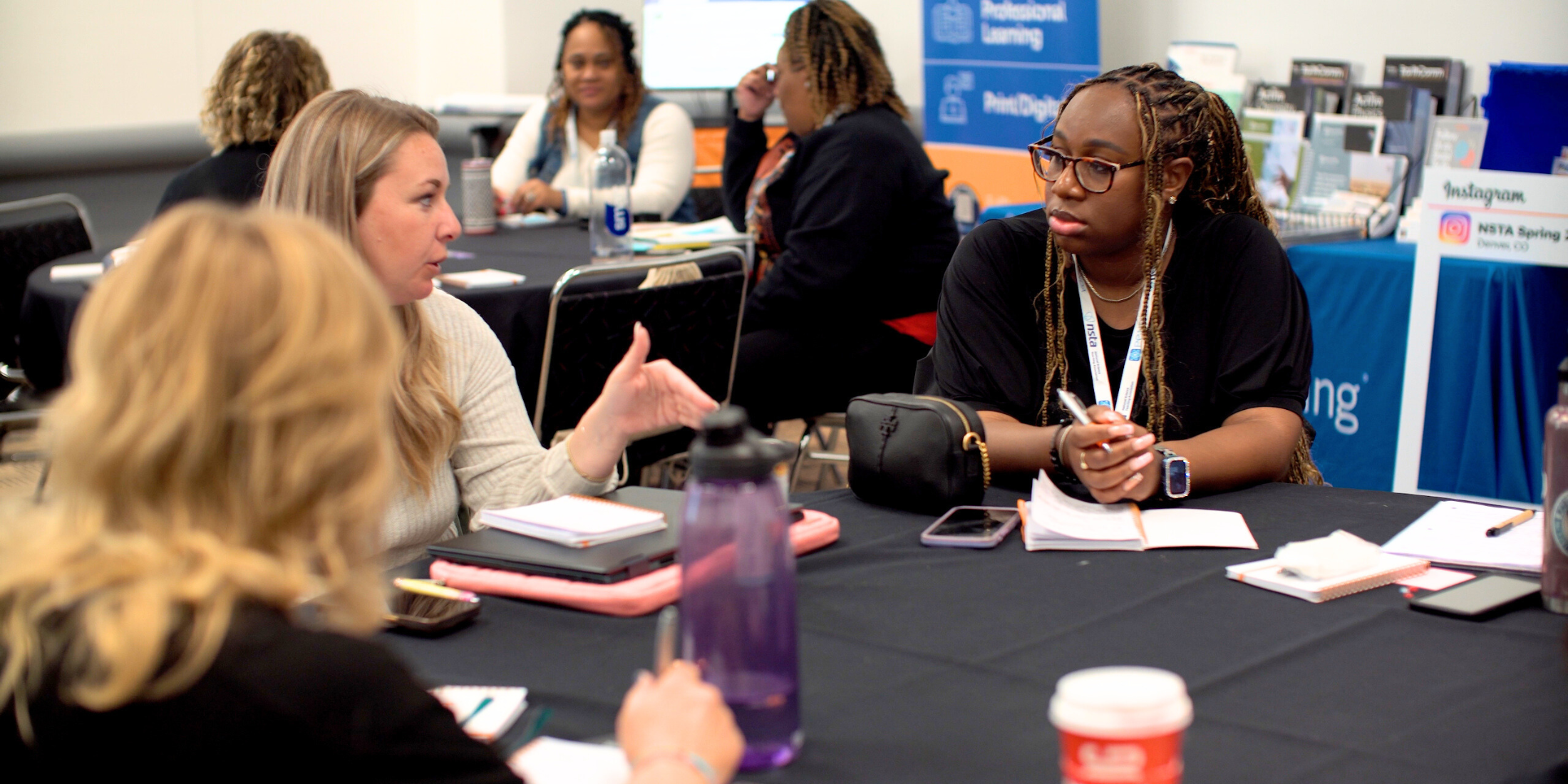
New Science Teacher in 2025? Here's Your Roadmap to First-Year Success
Share

Reading Time: 5 minutes
Congratulations! You've landed your first science teaching position. Now comes the real challenge: translating your passion for science into engaging, effective classroom experiences. If you're feeling a mix of excitement and overwhelming panic, you're not alone—and you're in the right place.

The New Teacher Reality Check
Let's be honest: your first year of science teaching will be intense. You'll juggle lesson planning, lab safety protocols, parent communication, grading, and about fifty other responsibilities no education program fully prepares you for. But here's what veteran teachers know: success isn't about perfection—it's about having the right resources and support systems.
With science education facing critical teacher shortages nationwide, districts are more supportive of new teachers than ever before. The key is knowing where to find help and how to use it effectively.

Your First 30 Days: The Foundation
Week 1-2: Safety and Procedures
Before you touch a single lesson plan, master lab safety. Students can sense when teachers are uncertain about safety protocols, and that uncertainty kills both learning and classroom management.
What you need:
- Complete safety training for your specific lab equipment
- Emergency procedure practice (not just reading about it)
- Student safety assessment tools to ensure comprehension
Where Sciesmic helps: Our comprehensive lab safety station activities transform boring safety lectures into engaging, hands-on learning experiences. Students don't just memorize rules—they understand the why behind safety protocols through real scenarios and interactive challenges.
Week 3-4: Content Delivery Systems
You need reliable, engaging activities that work even when (not if) your original lesson plan falls apart.
Essential resources:
- No-prep reading activities for unexpected schedule changes
- Flexible lab alternatives when equipment fails
- Discussion protocols that keep students engaged without expensive materials
Where Sciesmic helps: Our reading articles and writing prompts are designed for exactly these moments. Each resource includes multiple implementation options, so whether you have 15 minutes or a full period, you can deliver meaningful science learning.

The Three Biggest New Teacher Challenges (And How to Solve Them)
Challenge 1: "I Don't Have Time to Create Everything"
The reality: You cannot create every worksheet, lab, and assessment from scratch. Veteran teachers have built up resource libraries over years—you need quality materials immediately.
The solution: Strategic resource investment and adaptation. Focus on versatile activities that serve multiple purposes.
Sciesmic's approach: Every resource we create serves multiple learning objectives. Our reading articles build science literacy while teaching content. Our writing prompts develop communication skills while reinforcing concepts. Our task cards work for centers, early finishers, or whole-class review.
Challenge 2: "My Students Have Wildly Different Reading Levels"
The reality: Your 9th-grade biology class might include students reading at 6th-grade level and others ready for college texts.
The solution: Differentiated content that maintains high expectations for all learners.
Sciesmic's approach: Our materials include multiple entry points. Complex concepts are scaffolded through visual supports, vocabulary development, and graduated questioning that builds confidence while challenging growth.
Challenge 3: "I Want Hands-On Learning But Have No Budget"
The reality: Engaging science activities shouldn't require expensive equipment that your district doesn't have.
The solution: Creative use of everyday materials and strategic lab design.
Sciesmic's approach: Our lab station activities specifically use common classroom supplies. Students get authentic scientific experiences through careful design, not expensive gadgets.
Building Your Professional Learning Network
Online Communities That Actually Help
- Science teacher Facebook groups for daily support and resource sharing
- NSTA (National Science Teachers Association) for professional development
- State science education organizations for local networking
Local Support Systems
- Veteran teacher mentors in your building (ask administration to assign one)
- Department colleagues for curriculum guidance and reality checks
- University partnerships many districts maintain for ongoing support
Professional Development Priorities
Year 1 Focus:
- Classroom management specific to lab environments
- Safety certification for your grade level and content area
- Technology integration that enhances rather than complicates learning
Technology That Actually Saves Time
Essential Digital Tools
- Google Classroom for assignment distribution and organization
- Remind for parent communication
- Kahoot for quick formative assessments
- Flipgrid for student discussion and reflection
Time-Saving Strategies
- Template everything: Lesson plans, parent emails, hall passes
- Batch similar tasks: Grade all labs at once, plan similar activities together
- Automate routine communications: Set up auto-responses and weekly updates
Sciesmic's digital integration: All our resources come in both printable and digital formats. Share articles through Google Classroom, use writing prompts in online discussions, or adapt task cards for virtual stations.

The Growth Mindset for New Teachers
Expect the Learning Curve
Month 1: Survival mode (totally normal) Month 3: Finding your rhythm Month 6: Genuine confidence in daily operations Month 9: Planning improvements for next year Year 2: Actually feeling like a teacher
Measure Success Realistically
Don't measure success by:
- Having perfectly Pinterest-worthy bulletin boards
- Never having a lesson go differently than planned
- Students loving every single activity
Do measure success by:
- Students feeling safe to ask questions and make mistakes
- Gradual improvement in engagement and understanding
- Your own growing confidence and problem-solving skills
Your First-Year Resource Checklist
Must-Have Materials
✅ Lab safety resources that students actually engage with ✅ Flexible reading materials for various content areas ✅ Writing prompts that build science literacy ✅ Quick formative assessment tools for daily feedback ✅ Emergency lesson plans for unexpected situations
Professional Support
✅ Mentor teacher for guidance and reality checks ✅ Professional learning community for ongoing support ✅ Resource subscription for curated, classroom-ready materials
Personal Sustainability
✅ Work-life boundaries to prevent burnout ✅ Self-care routine for managing stress ✅ Growth mindset for handling inevitable challenges
How Sciesmic Supports New Teachers
Ready-to-Use Resources
Every Sciesmic resource is designed with new teachers in mind:
- Clear implementation instructions so you know exactly what to do
- Multiple difficulty levels to meet diverse student needs
- Standards alignment clearly marked for easy planning
- Time-flexible formats that adapt to your schedule
Ongoing Support
- Weekly newsletter with timely teaching tips and resource ideas
- Professional development webinars addressing real classroom challenges
- Community connection with other science teachers facing similar situations
Budget-Friendly Options
- Free starter resources to help you begin immediately
- Affordable individual resources for targeted needs
- Bundle options that grow with you throughout the year
Your Next Steps
This Week:
- Download our New Teacher Survival Kit (includes safety activities, emergency lesson plans, and parent communication templates)
- Join our newsletter for weekly support and resource ideas
- Connect with one veteran teacher in your building for mentorship
This Month:
- Establish your resource collection with versatile, high-quality materials
- Set up your digital systems for organization and communication
- Plan your first parent communication explaining your teaching approach
This Year:
- Focus on growth, not perfection in every aspect of teaching
- Build relationships with students, colleagues, and families
- Document what works for even stronger Year 2 planning

Remember: You've Got This
Teaching science in 2025 means joining a profession that's never been more important or more supported. Yes, the learning curve is steep, but you're not climbing it alone. With the right resources, realistic expectations, and a commitment to growth, your first year can be the foundation for a deeply rewarding career.
Ready to start strong?
[Register for Free Science Resources] - Everything you need for your first month
[Subscribe to Newsletter] - Free support delivered straight to your inbox




